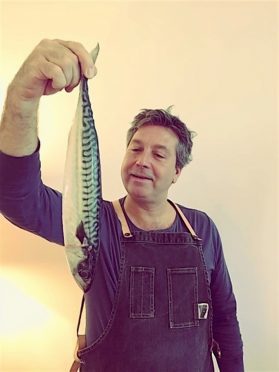Celebrity chef John Torode is spearheading a campaign to get more people to eat healthy, oily fish.
Industry body Seafish has enlisted the support of the restaurateur for its “superfishoil” campaign.
The body released new research which found that not enough people are aware of the health benefits that come with adding seafood to their diet. Seafish contends that eating at least two portions of seafood per week, with one oily portion, could dramatically reduce the risk of coronary heart disease (CHD).
The study found that seven in ten people still don’t know that by eating seafood can reduce the risk of heart disease. This is reflected in other studies which found that eight in ten of CHD cases could have been prevented through a healthier lifestyle.
The Seafish campaign aims to emphasise the benefits of a healthy diet that includes seafood. Fish is rich in omega-3, which helps to maintain a healthy heart through supporting normal blood pressure and blood levels of triglycerides, a type of fat in the blood. This reduces the risk of heart attacks and strokes.
Mr Torode said: “I support the ‘Superfishoil’ campaign from Seafish and hope that it will encourage people to eat more seafood, especially oily fish!
“There’s a wide variety of delicious and affordable produce out there, from mackerel and kippers to sardines and crab, and seafood is so versatile – it can be used to make so many fantastic dishes.
“There are numerous health benefits associated with omega-3 rich seafood, including that it’s packed with vitamins and minerals and helps maintain a healthy heart and cholesterol.”
Seafish’s campaign is also supported by charity Heart Research UK and Professor Ed Rainger, from the Institute of Cardiovascular Sciences at the University of Birmingham, who has published reviews on chronic inflammation and omega-3 polyunsaturated fatty acids.
Juliette Kellow, registered dietitian and media nutrition consultant, is also backing the campaign to demonstrate how easy it is, through delicious seafood, to get lots of vitamins and minerals into our diets.
Ms Kellow, said: “Research shows that not enough people are aware that they should be eating at least two portions of seafood per week, with one oily portion, and that this could come from a vast array of species including mackerel and sardines, to name but a few. Shellfish like crab and prawns are also good sources.
“The high omega-3 content that many fish carry has been linked to various health benefits, including helping the heart to work normally, maintaining normal blood pressure and blood triglyceride levels, contributing to normal brain development and being important for our eyesight and brain function. I’d encourage people to incorporate more oil-rich fish and seafood into their diet, it’s nutritious, versatile and affordable – perfect for everyone.”
Vicki Litherland, Heart Research UK lifestyle officer and nutritionist: “Coronary heart disease is the UK’s biggest killer but shockingly 80% of cases could be prevented through healthier lifestyles. What we eat impacts not only on the way we look and feel on the outside, but what’s happening inside our bodies too.
“Healthy lifestyle choices can help to promote healthy blood pressure and cholesterol levels and reduce risk of heart disease, type 2 diabetes and a host of other long-term conditions.
“A diet including omega-3 rich seafood, combined with being active and not smoking, is a great way to look after your heart and have a healthier, happier and longer life.”
Mr Rainger, Professor of Chronic Inflammation at the University of Birmingham, said: “Eating oily fish is good for your cardiovascular health. There is strong evidence that eating fish twice a week over the long term provides protection against heart attack and stroke, although greater benefits are indicated with the consumption up to 5 meals containing fish a week.
“The benefits of fish oil in preventing so called secondary events in patients who have already had a heart attack or stroke is less certain, and more evidence is required before we can draw firm conclusions about benefits in secondary prevention.”










